This is a trial run, of branching out to explore other categories of fermentation, and talk about their similarities to cheese. I came to Mexico to speak at an event called Ferment Oaxaca, and will spend a month down here learning about the rich gastronomy of the region. There are some cheeses to explore, mainly Quesillo, or what is referred to as Queso Oaxaca in the rest of Mexico and the US. I’ll get to that. Just wait. In this moment I find myself captivated by another subject: alcohol beverages with deep histories and interesting fermentations.
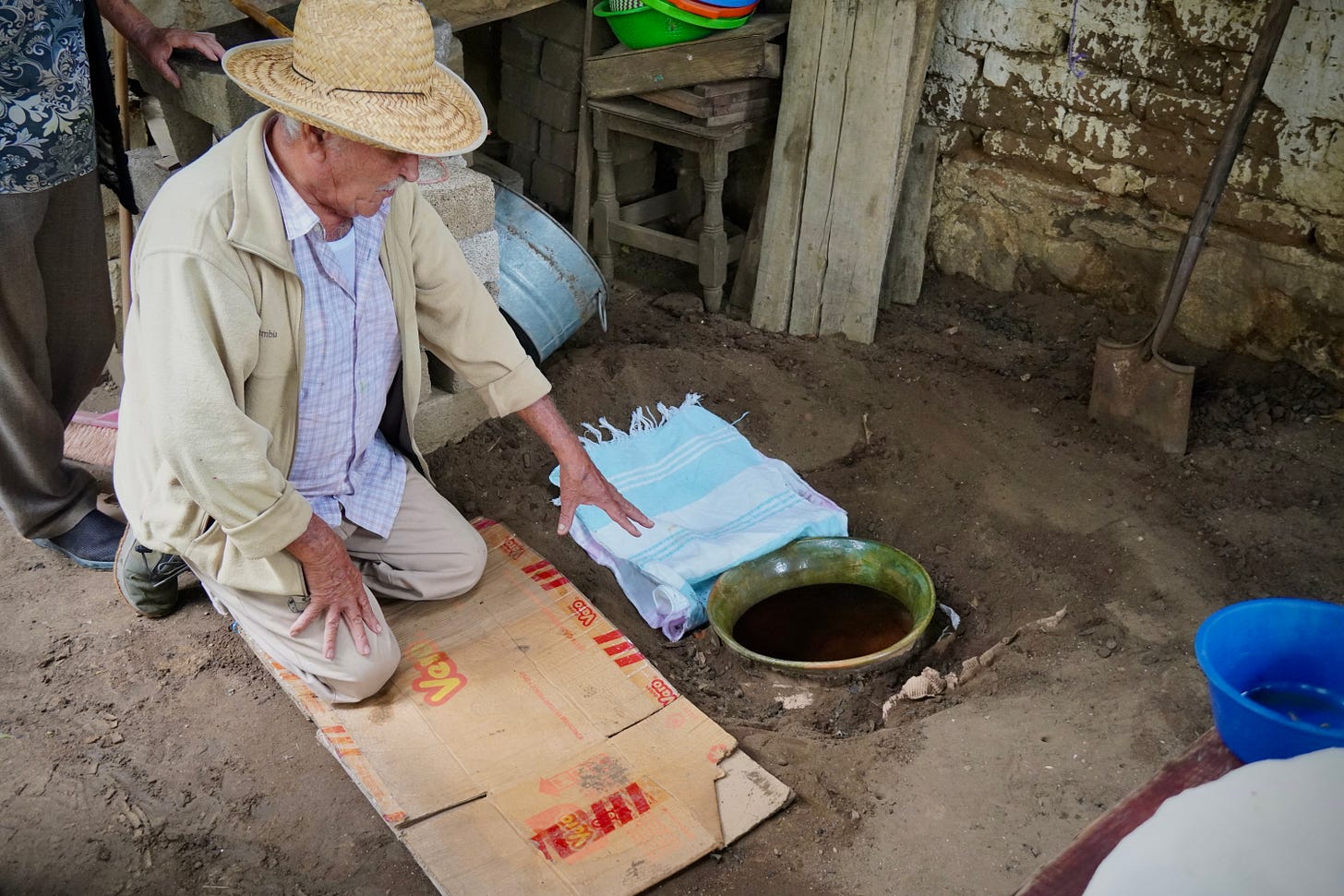
AAB = Acetic Acid Bacteria. A group that is the primary agent in vinegar, that can also be seen at lower levels in many alcohol ferments.
S.C.O.B.Y = Symbiotic Community Of Bacteria and Yeast. These are utilized by humans as starter cultures for various fermented foods and beverages such as:
Sourdough (the SCOBY is in the starter, and in the dough before it is baked).
Kombucha (in the liquid, and dwelling in and on the gelatinous pellicle that floats on top as is sometimes called the mother.
Kefir (lives on the grains, which carries the SCOBY forward.
Many natural wines and beers, where the SCOBY could live on equipment, or occur spontaneously, from airborne or fruit derived microbes.
In making tepache, I would argue you are cultivating a SCOBY, from the yeasts on the fruit, and fruit-or-airborne bacteria, commonly AAB and perhaps others. One recipe below calls for adding wild yeast, and explains how to “capture” them. I find AAB almost always find their way into alcohol ferments left exposed to air, especially when there is rotting fruit lying around.
I first had tepache when I made it in Ecuador, following a technique that is now seemingly global of using the skins and cores of ripe pineapples to create a lightly fizzy fermented drink. Using an unrefined dark sugar called panela, and a stick of cinnamon, the fermentation quickly created alcohol and then acids, in a refreshing, kombucha like drink. If you want to taste it, simply find some pineapples and the least refined sugar available, and go for it. Here’s a RECIPE, there are many others. Good places to start, but I feel these things are more of techniques than recipes. FERMENTATION IS NOTHING TO BE SCARED OF. The processes are ancient and the results consistently do the exact opposite of making people sick. They help us become well again. To participate in fermentation, and ingest its results, is a part of remembering how to be human again.
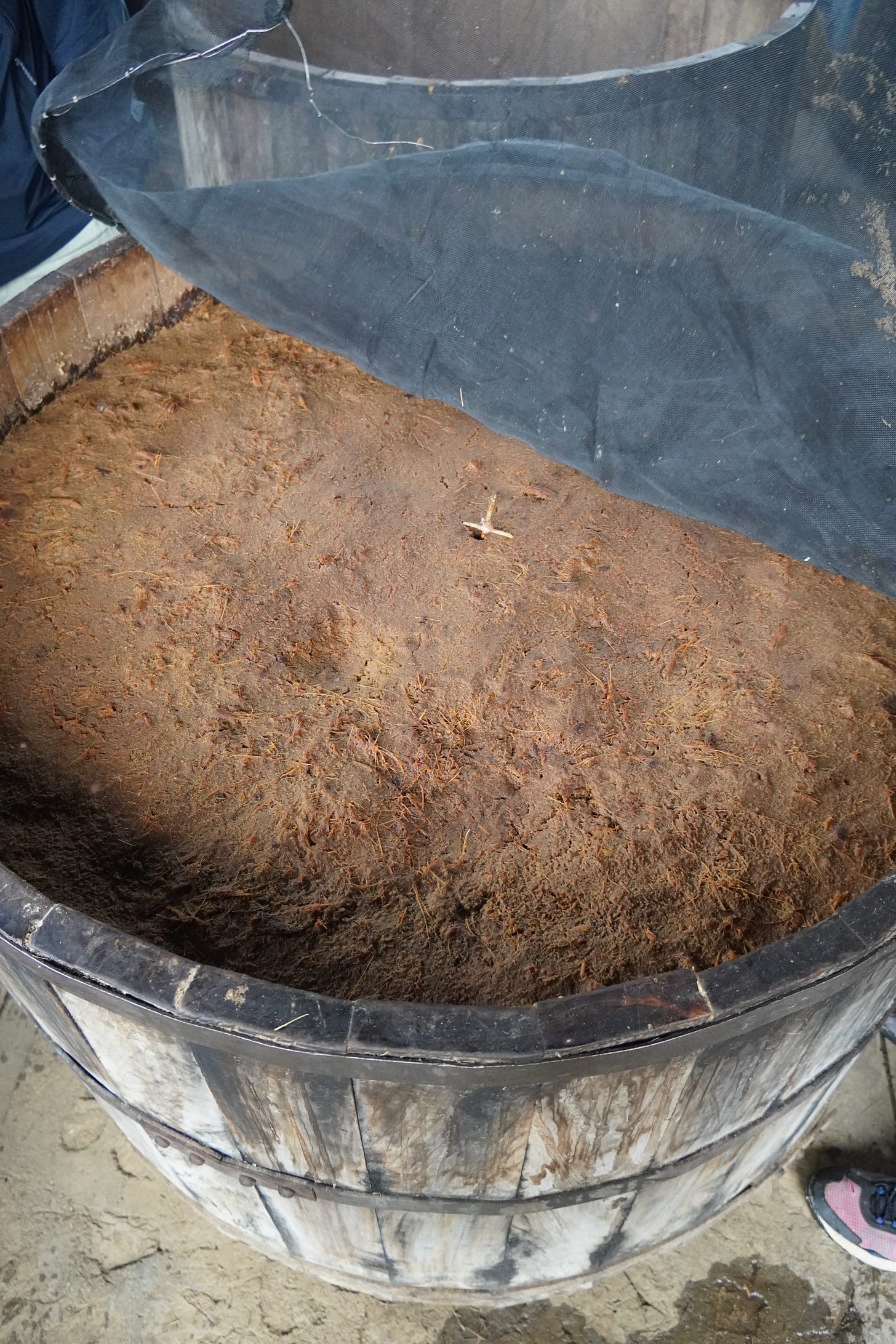
While reading about agave distillation, I realized the term tepache is used to refer to more than a fizzy pineapple beverage. The term is also used for the liquid resulting from roasted and ground agave, fermented until the sugars have turned to alcohol, before it is distilled. This ferm is often allowed to go much further, into the realms of acids such as those that occur in sour beer or vinegar. Are there other distillates that allow the initial alcohol ferm to go longer than is perhaps neccesary? Maybe
can offer insight. More on Mezcal in a later post. I have to do more “research” first.Vinegar results from acetic acid bacteria (AAB) fermenting ethyl alcohol into acetic acid. Other acids can come from the fruit - or various fermentations - including propionic, pyruvic, malic, citric, and lactic. Many beers are referred to as “mixed fermentations” in that they involve alcohol production from yeasts, followed by the build up of acids from bacteria, which results in cascades of flavor development. This can happen somewhat simultaneously as seen in kombucha, which is produced by a SCOBY in which the alcohol made by yeast is transformed into acids as it is created. That’s an oversimplification, acids can also come from other directions. When you try your hand at tepache, or a fruit wine, let some of it stroll down the vinegar path, tasting it every few days as it becomes progressively more sour. The more sugar there is to start, the more alcohol can build, and the more acidity can be produced.
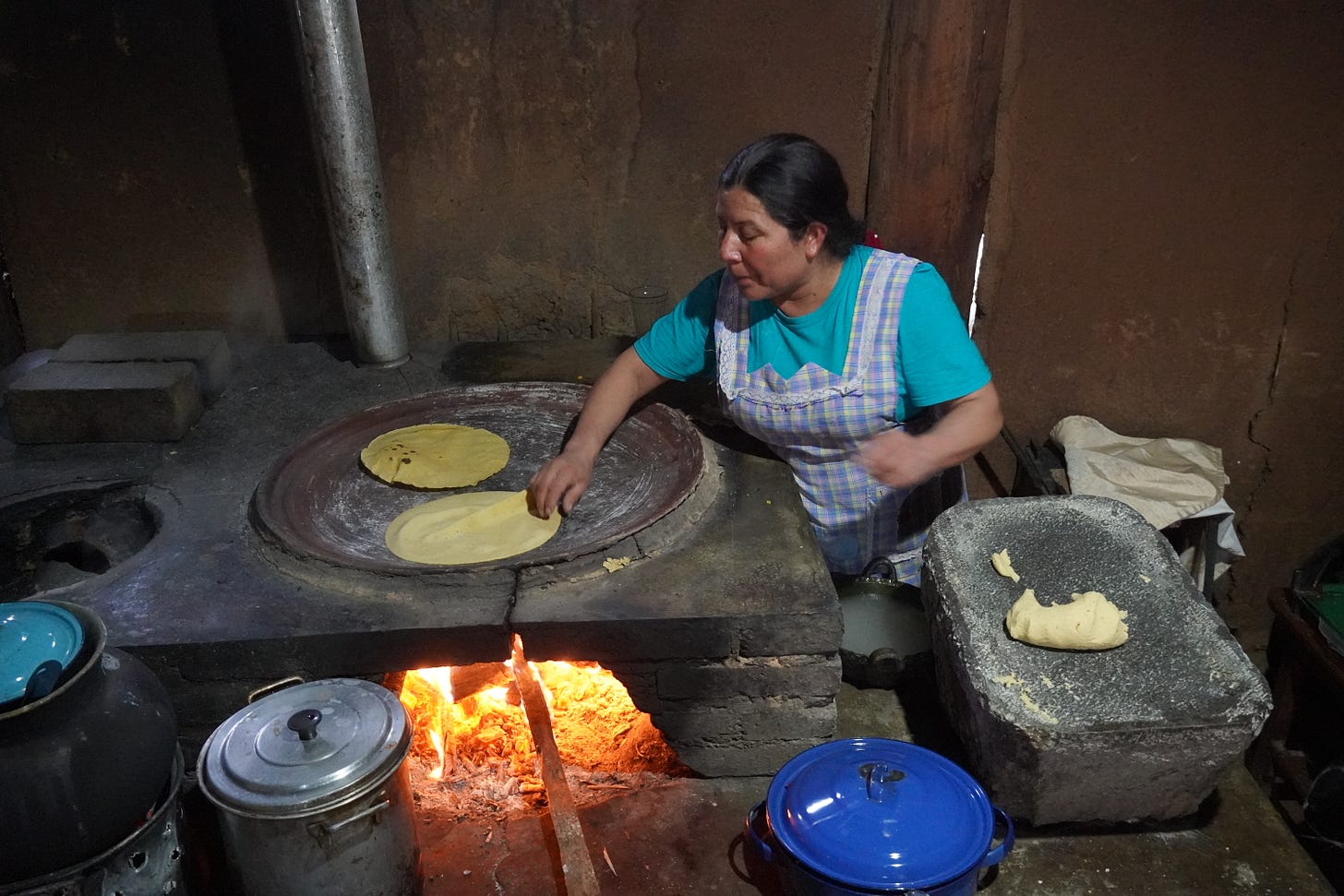
I also see mixed fermentations in many sour milks and cheeses. The clearest example is real kefir, made from “grains” which serve as the home for a SCOBY that is very comparable to kombucha. I also see it in many cheeses, as bacteria convert milk sugars into acids, and then yeasts grow on or in the cheese, often feeding on lactic acid, creating aromatic compounds and preparing cheese rinds for the growth of filamentous fungi (molds), or bacterially dominant communities (the orange sticky stinky smear of washed-rind cheeses). It’s somewhat of an inversion of the beer/wine route, with the bacteria doing souring first, and the yeast coming in later. But these lines become blurred and the world of natural, wild, or spontaneous fermentation evades clean, divisible timelines. Biology defies categorization. Nature pays no mind to human imposed borders.
We drove down muddy roads cutting through fields that look nothing like the corn deserts of Iowa. Referred to as Milpas, these are corn polycultures that include legumes and squash, as well as many kinds of wild greens referred to collectively as quelites. The fields are arranged in roughly rectangular formations, but the rows are far from straight. It turns out that a straight line is an ideal or delusion. Even a laser beam sent off into space will diffract and bend. Some would say we were lost, but vague directions, a lack of google map pins, and multiple phone calls are par for the course when it comes to seeking the homes of practioners of endangered food ways. In my line of work, the best places are hard to get to. The roads rocky. Timing imprecise. Plans far from linear.
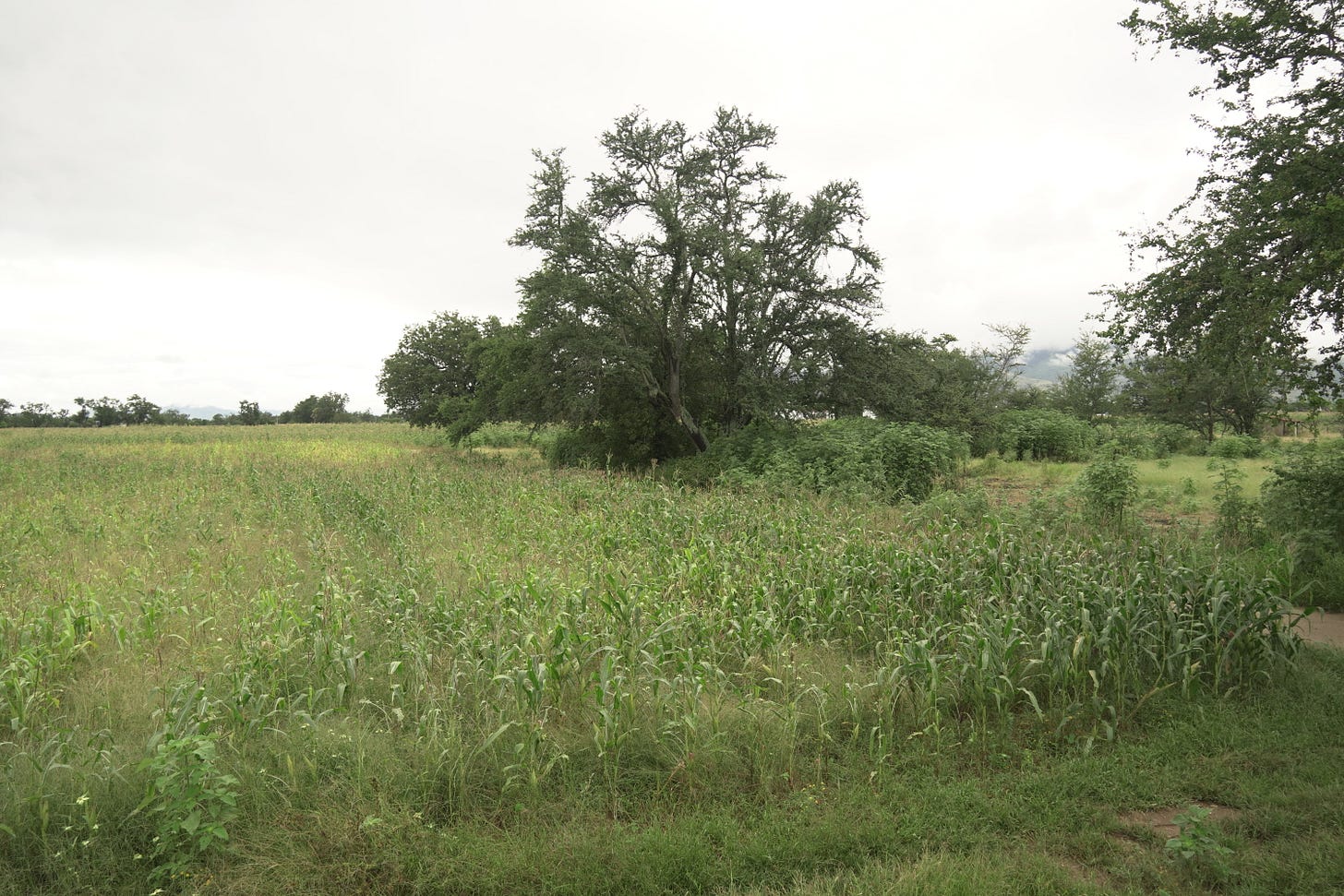
After running into a creek, we turned around and drove through a small village, the number of horses, donkeys, and backyard chickens increasing suddenly. A good sign. We pulled into a large property surrounded by earthen walls that could be hundreds of years old. Roaming sheep ducked away and turkeys stared dumbly as we gringos spilled out of the van like a large litter of puppies on their first trip to the park. We were warmly greeted with handshakes and good mornings from Don Rene and Doña Maria Sanchez who walked us back to an open-walled, shed-like structure, with makeshift tables, an outdoor wood oven with comal, and many pottery vessels and bright plastic implements hanging from a wall made of ancient adobe bricks, white paint flaking off. Don got straight to business, kneeling to pull aside a plastic grain sack revealing a buried pottery vessel partially filled with a brown stew of fermenting fruit. The duo acted as a single organism, removing the contents and straining the fruit out with ritual precision. On autopilot. Like they had done it a thousand times before.
We were poured glasses of tepache, rimmed with a salt/chile mixture that also contains gusano, a red worm that feeds on agave. This adds an earthy, smoky flavor to the salt, and is often served with orange or cucumber alongside mezcal. We learned that in this region, tepache can contain many different fruits. This would more accurately be called tepache de frutas. At this house it always includes sugarcane, which was the main ingredient when they formerly were involved in growing it and making sugar. Pineapple and apple joined the party, along with black banana skins, but not the fruit, which can cause the tepache to get thick or slimy. I was surprised by how ripe these fruits were. Like, overripe. The kind most of us would say were ready to compost. I have always pushed back against the idea that ferments can be a vehicle for salvaging such fruit, arguing that we should use the highest quality ingredients, making ferments intentionally with fresh produce at peak ripeness. After a conversation with
I am now questioning this as perhaps being a stance coming from the age of refrigerated shipping, and the privilege of abundant, blemish free produce. The couple claimed the fruits should be very ripe, containing the most sugars, and perhaps starting to ferment already.The line between ripe and rotten is blurry, subjective, and relative.
The edge is where the action is.
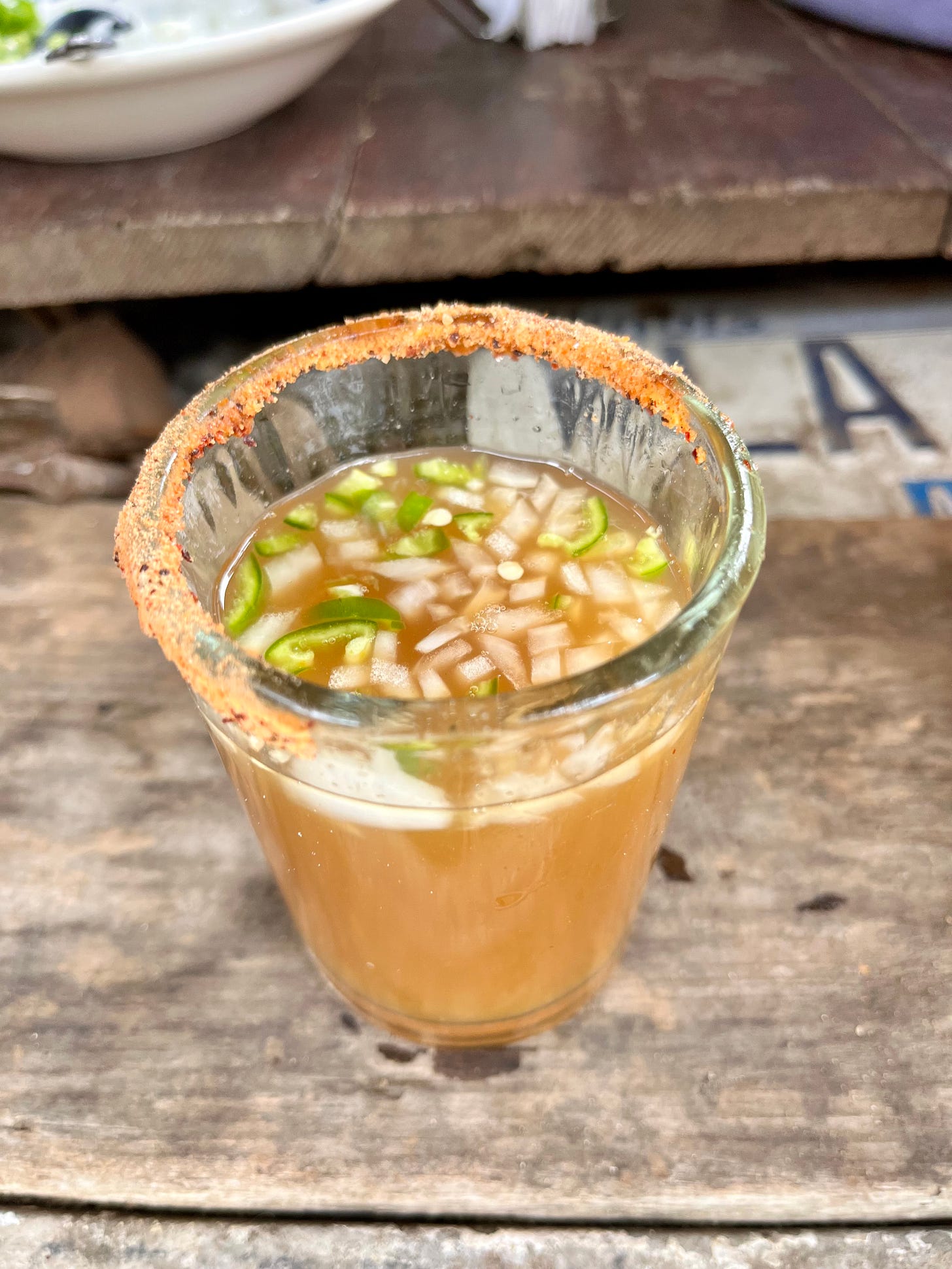
Four days prior to our visit, they had lit a fire in the hole, without the vessel in it. This preheats the soil, and will help kick start the fermentation then insulate the vessel, which is put into the hole after the fire burns out. The fruit is cut up and added, along with water and a bit of pulque, which they say serves as a starter. Pulque is a low alcohol beverage made from agave sap, that involves a microbially diverse wild fermentation. I imagine the fruit would ferment without this, and it’s hard to know in what way the pulque affects things. But this is what they do. In addition to sugars from the fruit, an unrefined sugar called panela or piloncillo is added as more food for yeasts to turn into alcohol. The purpose-made vessel is buried up to its neck with earth, and covered to keep flies out. After 3 - 4 days, the fermentation is predictably satisfactory. It was still somewhat sweet, had minimal fizz, and a bit of sour, with at least lactic and acetic acid, as well as some of the diverse acids found in pineapple. My tongue would estimate a low alcohol content of 2 - 3%. The couple says they can let it keep going, which generates more alcohol, before slowly turning into vinegar.
The beverage was popular locally in the past, served at events like weddings, birthdays, and anniversaries. Oaxaqueños will always find a reason to throw a party. The growing and processing of sugarcane - which supplied the primary raw ingredients for this regional tepache - has been lost. As the local agrarian economy has dwindled, and people leave to work in the US, the practice of making traditional beverages like tepache is disappearing. It’s often old-timers who are keeping things like this alive, but assistance can come in the form of writers/photographers/filmmakers who help spread awareness by documenting these practices. A book titled “Bebidas De Oaxaca” by
and Ricardo Bonilla is one example of this, covering many fermented beverages, accompanied with rich photographs.From my focus on traditional cheeses, and speaking with brewers, fermenters, bakers, and natural winemakers, while consuming and learning about a range of ferments, I now feel that mixed fermentations are the norm.
That SCOBYs are everywhere, with unidentified species of bacteria and yeasts being cultivated through the cocreation of fermented foods via an alliance between humans and microbes, rather our control of them.
The idea that beer or wine should involve solely yeast-derived alcohol, fermented in an aseptic space where the only microbes involved are those we introduce from sealed packages is a very new approach.
A fantasy of the pasteurian age and its reckless hubris.
The wines and cheeses that interest me are a bit more wild. I like sourdough that has a restrained sourness resulting from keeping the SCOBY happy, not allowing it to become malnourished and less diverse, with acid loving bacteria dominating. I am finding that these crafts are less about identifying the specific species, and more about learning how to influence the balance between yeasts and bacteria, and alter their growing conditions. Generations of practitioners have learned to encourage ferments and their root cultures to grow in the desired direction, while working with the range of variables presenting by surrounding environments, rather than trying to completely isolate their ferments in the illusion of a sealed room, with controlled, linear cultures.
There is no such thing as a straight line.
I know most of you expect a cheese and dairy pastoralism focus from Milk T, but I also know there are many reading from other sides of the ferm and culinary worlds, or those not involved at all who simply want to follow along and learn. I try to minimize the nerdy technical stuff, and hopefully am putting out pieces you all find useful and entertaining, that encourage exploration of the microbial realms. So what do you think? I like when people comment on here, and sharing these posts helps the mycelium spread. Are you ok with me dabbling in springs and seas that are less milky?




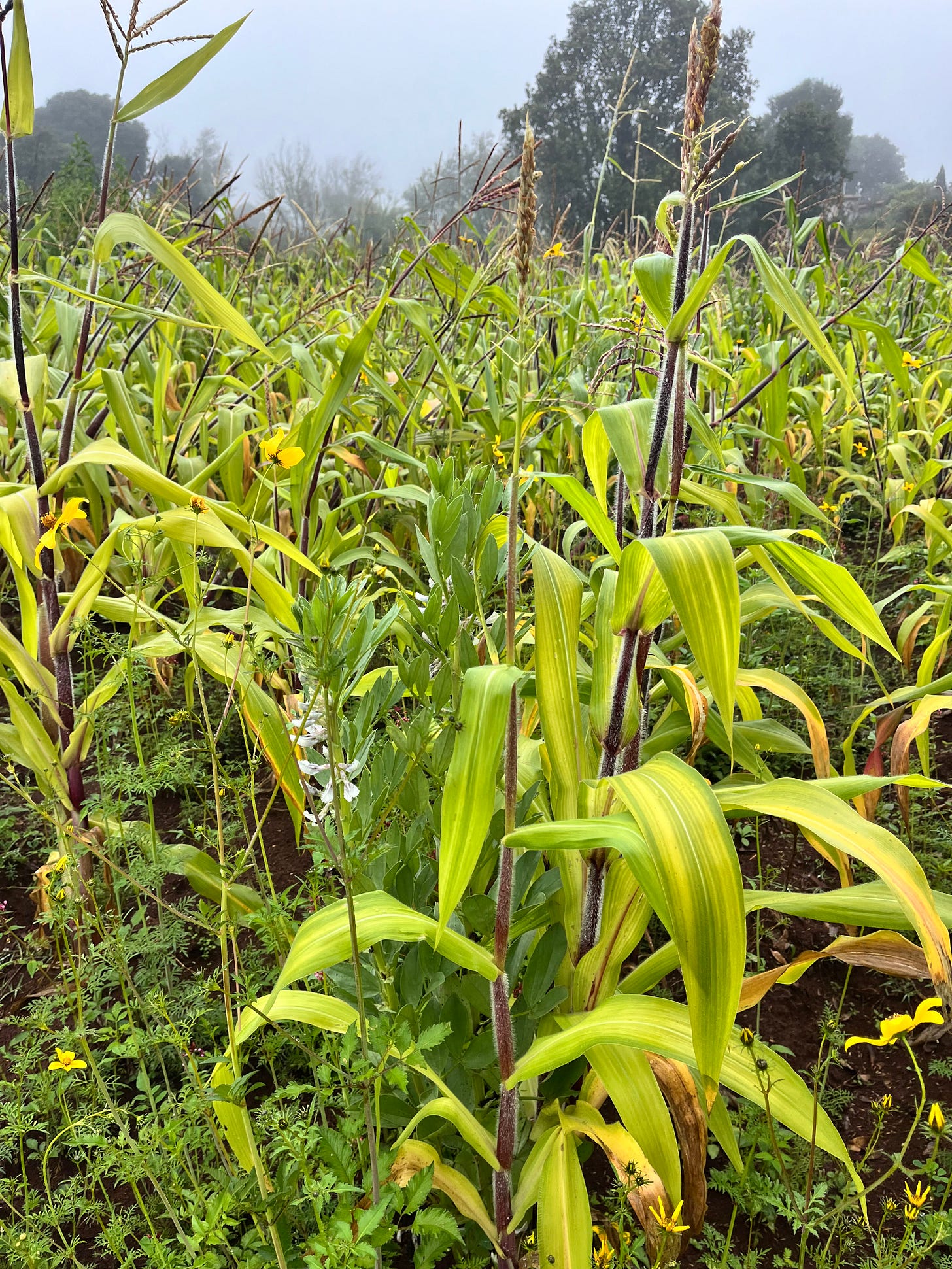
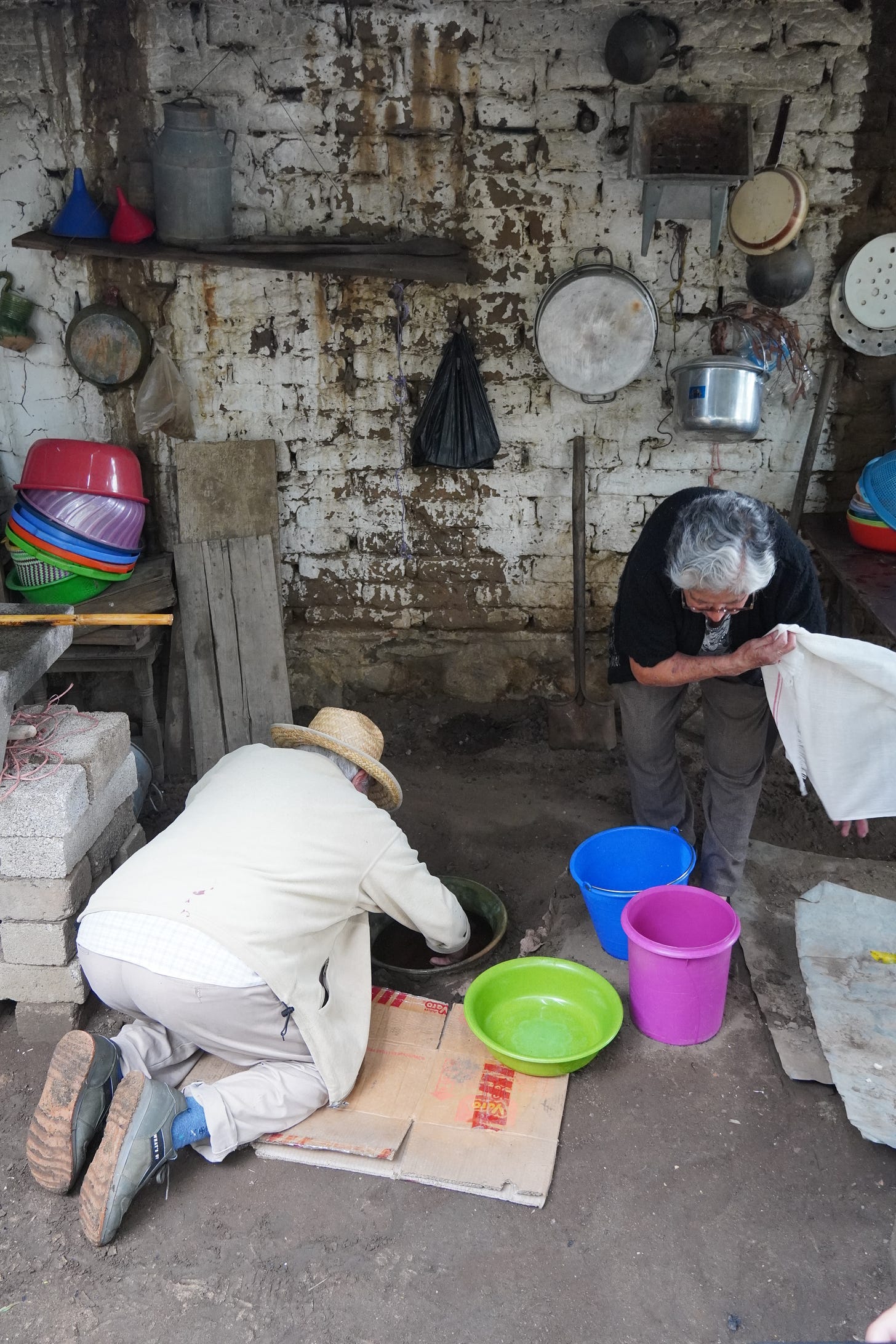
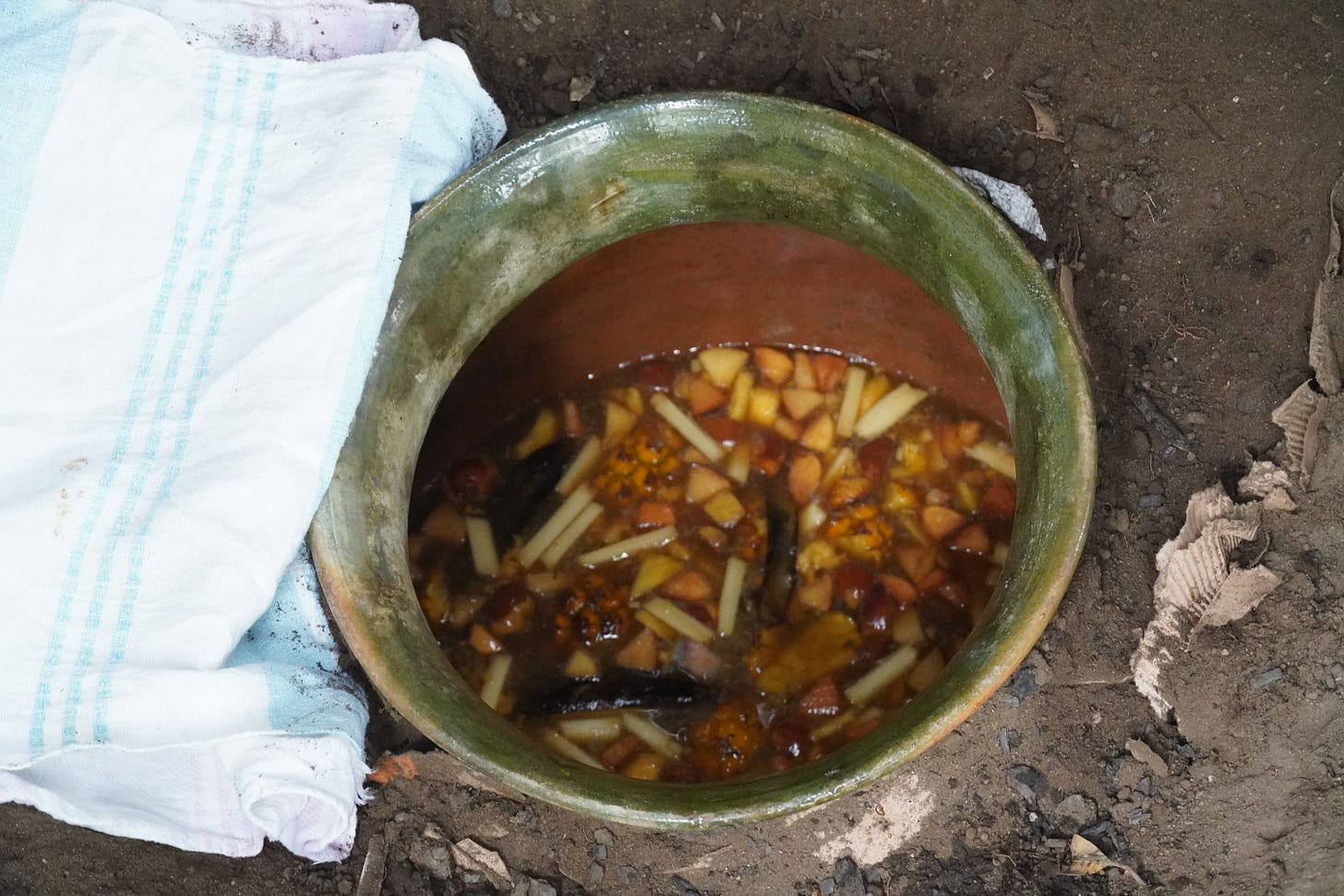
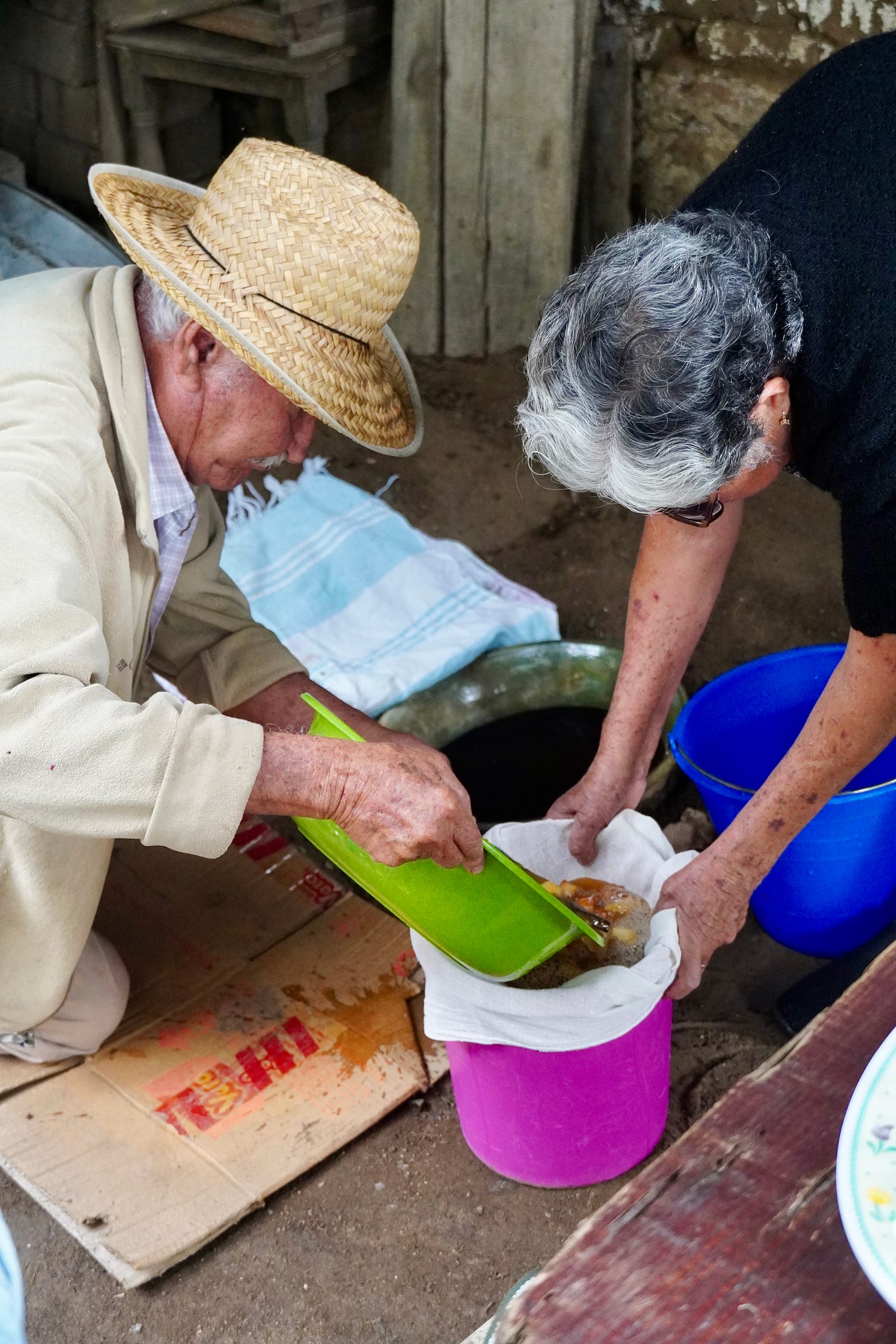

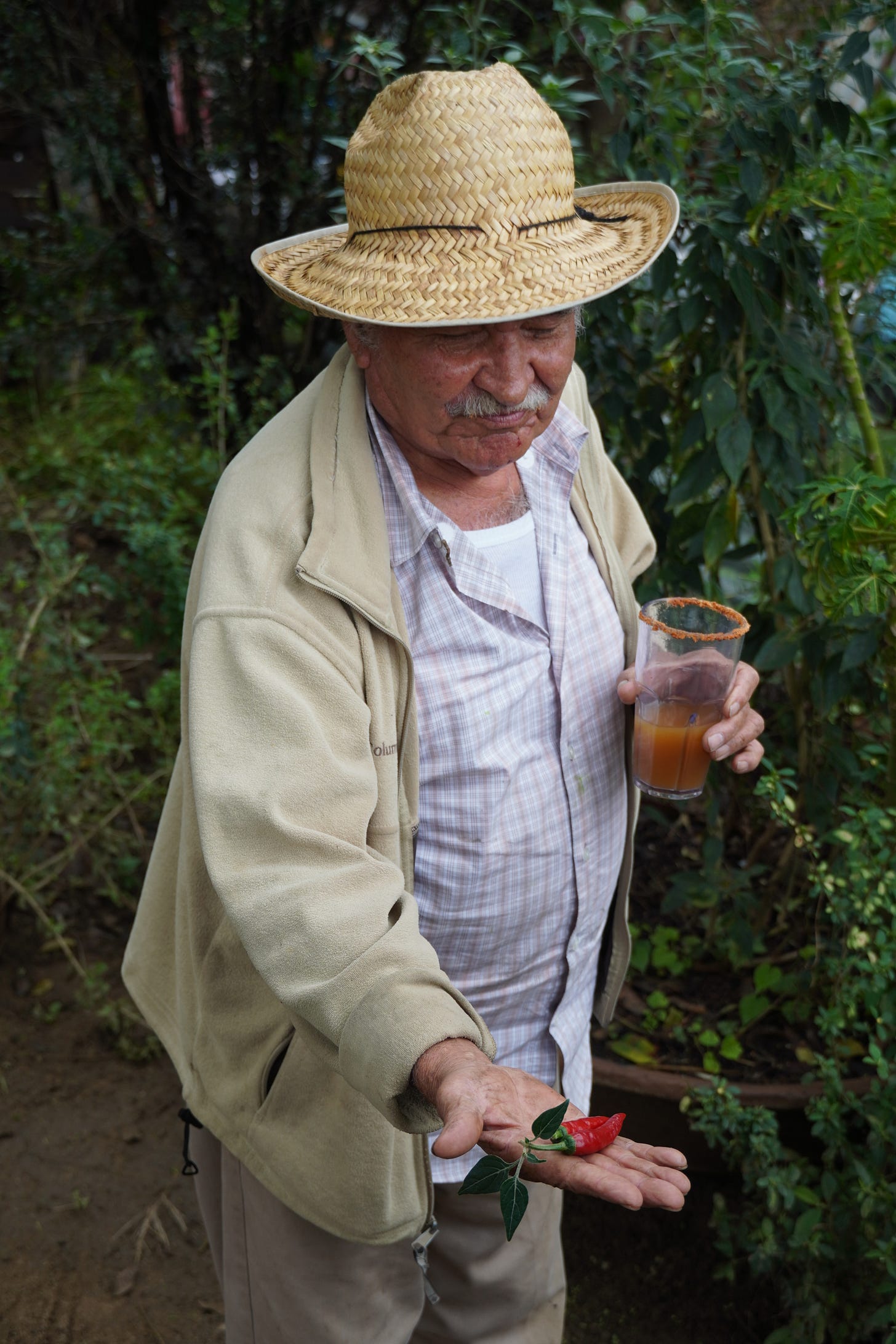
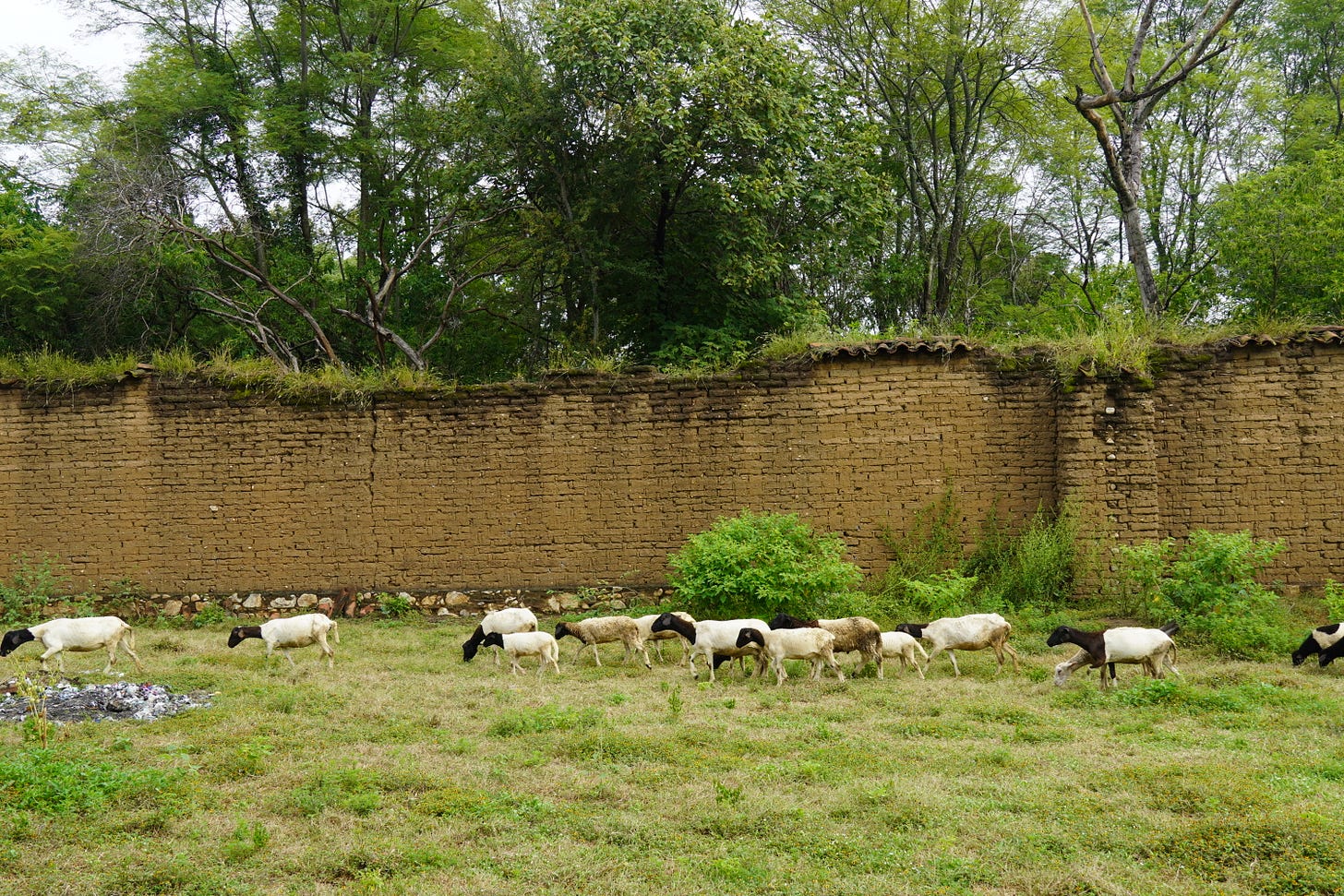
I always look forward to your writing, and I would really like to hear your thoughts and journeys with different fermentations, and also wouldn't mind you getting even more technical about it! Thank you for sharing, it's so appreciated.
This was very interesting to read! We all can learn something when straying off the course.